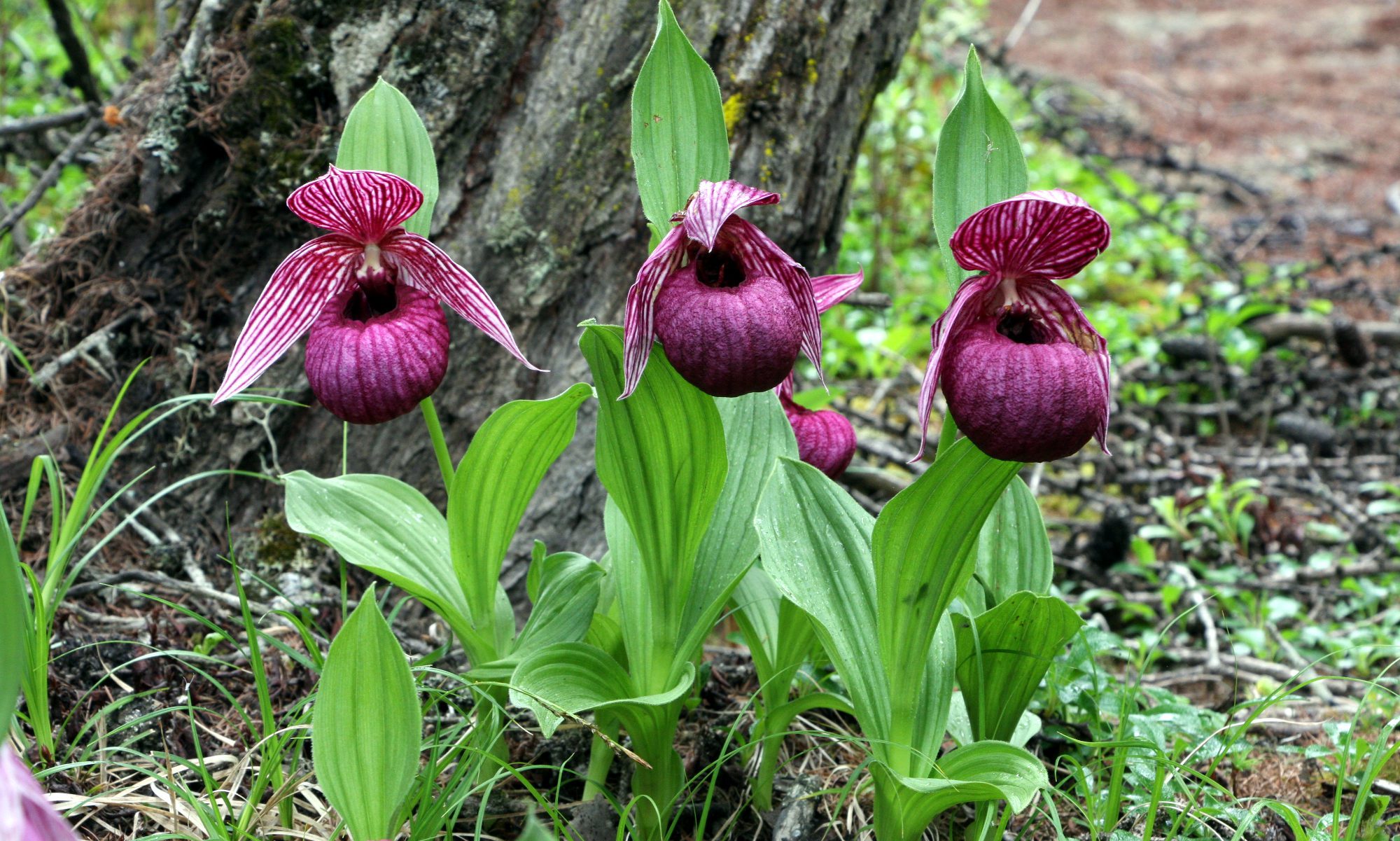By far the most wide ranging Cypripedium in all of North America is C. parviflorum v. pubescens, also known as the large yellow lady slipper. It has been found in 42 of the lower 48 states in the US plus Alaska (missing only in California, Florida, Louisiana, Nevada, Oklahoma, and Oregon), as well as all of Canada’s 10 provinces and two out of three territories (missing only in Nunavut). This plant is wide ranging not only in physical space, but in appearance as well. Plants in the far north sometimes stand little more than hand high and bear dwarfed flowers with nearly perfectly flat petals, while those found in the rich forests of the southern Appalachian mountains can grow taller than an adult man’s knee and have flowers nearly as big as the same man’s hand if splayed out. Due to this extreme range across geographic space and habit it has been the most problematic North American Cypripedium to delineate into a clean category. This is compounded by its interaction and interbreeding with v. parviflorum, and where their ranges overlap, the separate species, C. candidum.
Cypripedium parviflorum v. pubescens (hereafter referred to as v. pubescens) is a large deciduous, perennial, terrestrial orchid most commonly found in moist forests. Depending on where the plant is found growing, its height can vary widely, with flowering specimens standing little more than 12 cm tall and as much as 80 cm, nearly rivaling C. reginae in stature. Growth stems bear between 3-6 pubescent, ovate to ovate-lanceolate leaves, deeply ribbed, with each 6-20 cm long and 2-10 cm wide, and borne alternately off the stem. The vigorous root stock is like other Cypripedium species with a creeping, branched rhizome bearing numerous, creamy white to amber yellow non-forking roots that can exceed 40 cm in large specimens. In nature this plant can grow a single stem or be large clump numbering 20 or more stems, however plants with 3-5 stems is closer to the norm.

Flowers are borne at the top of the stem, usually singly, but occasionally in pairs. As its common name implies, they tend to be rather large with a natural spread up to at least 12 cm in larger flower forms, however the form planipetalum of the far north can be half that size. The dorsal sepal is large and broad, up to 8.5 cm long and half as wide, with a tendency to stand more or less erect, but sometimes overhanging the lip as in C. kentuckiense. It can be twisted at its end much like the petals, or be nearly perfectly flat depending on the plant. The synsepal is a bit smaller, and though it is held just off the lip’s surface, it curves to follow its contour. The petals are long and narrow, and again, depending on the form can vary widely in length, being as short as just 3 cm or as long as 9 cm, but rarely more than 1 cm wide. They tend to be presented at an angle of 45 degrees to the ground, but can hang lower. In most forms they are highly twisted, reminiscent of a spiral ribbon, though this can vary widely from plant to plant with some having extreme twisting and others much less. In the form planipetalum the petals tend to be presented almost at a perfect 90 degrees relative to the ground and have little or no twisting. The lip is large, up to 5 cm long, and tends to be ellipsoidal in shape, however some plants have more rounded lips. The staminode is triangular in shape with rounded corners and is held tightly over the column underneath.

Continue reading “Cypripedium parviflorum v. pubescens, the large yellow lady slipper”


















